
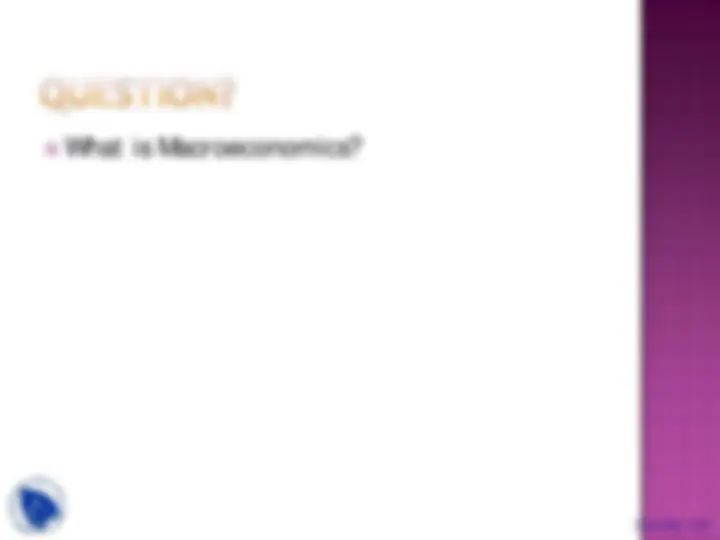
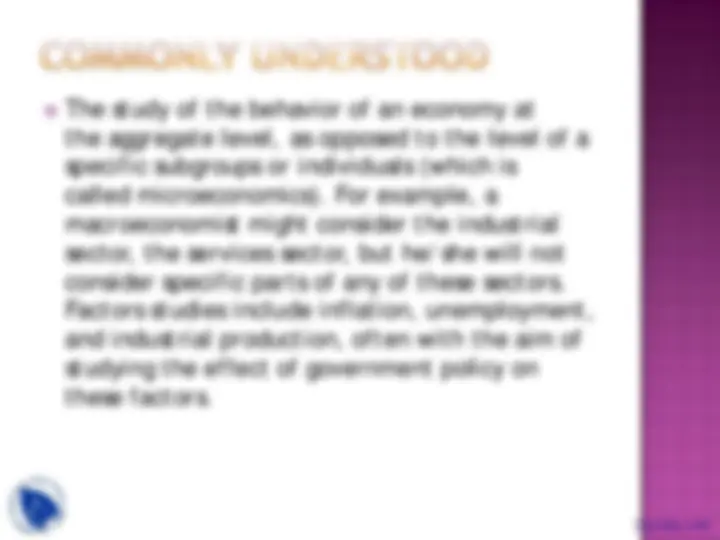
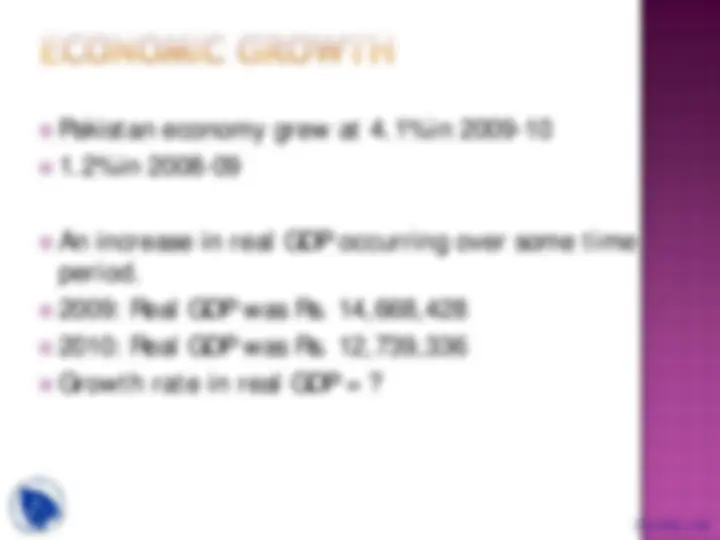
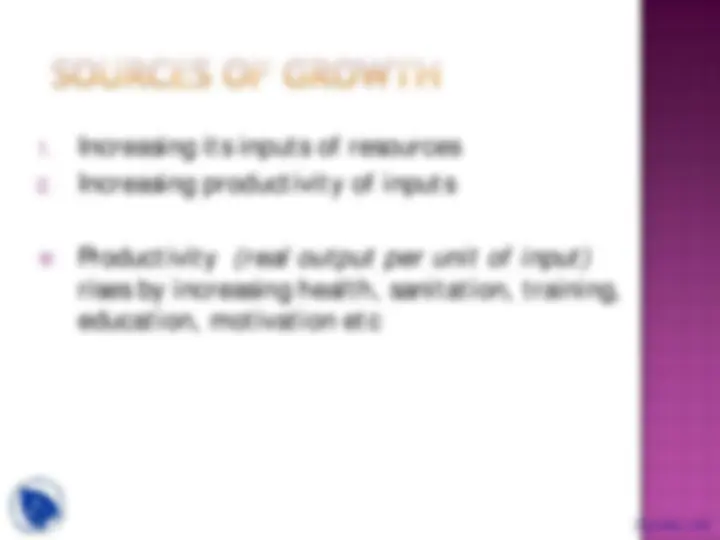
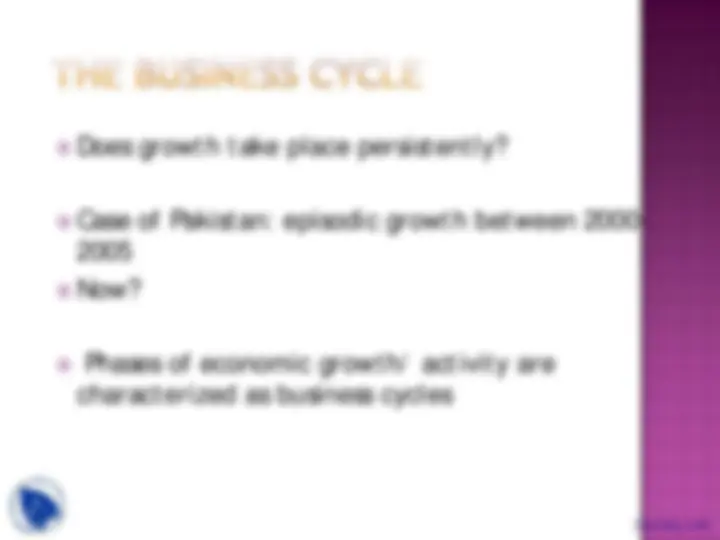
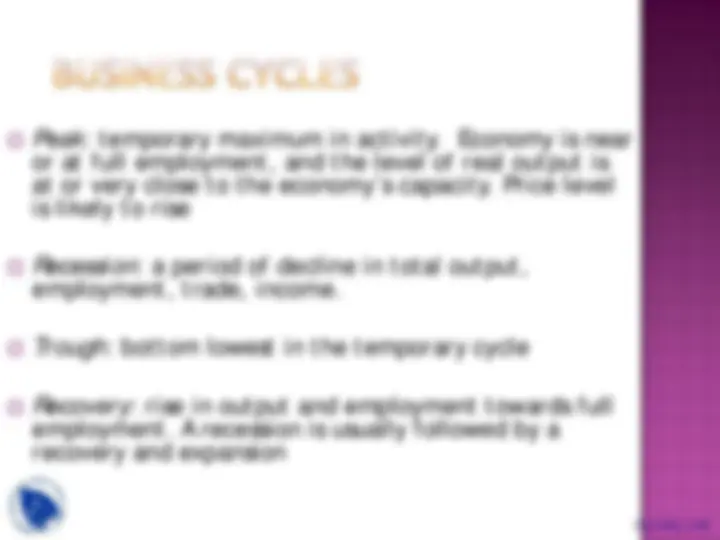
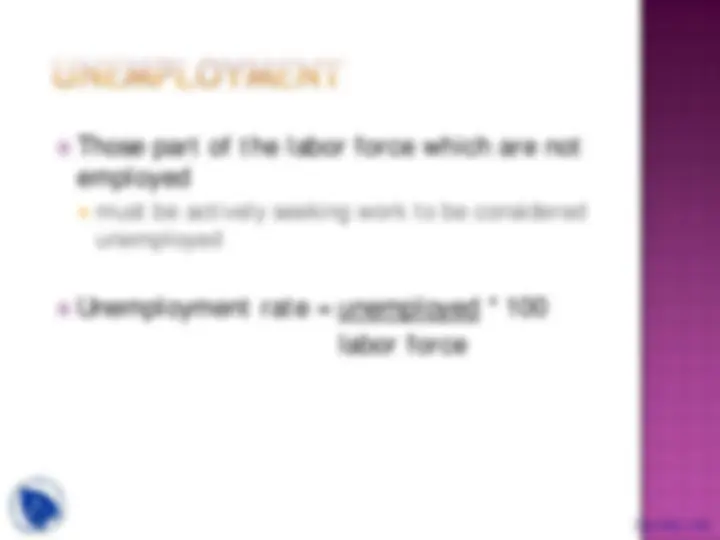
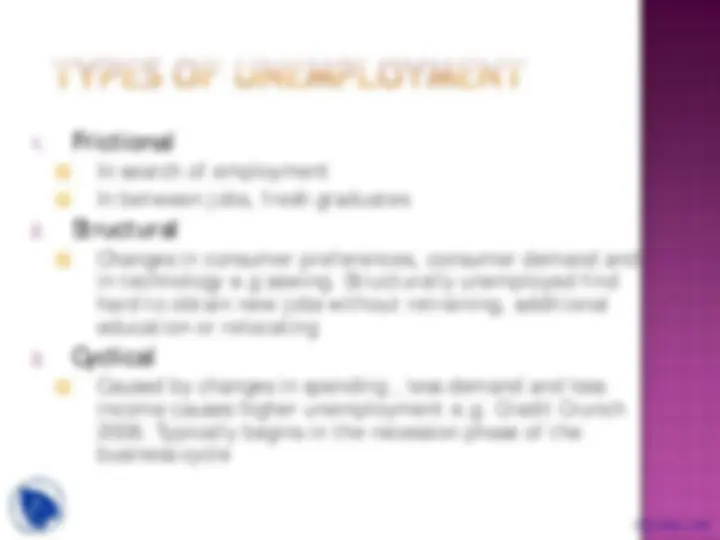
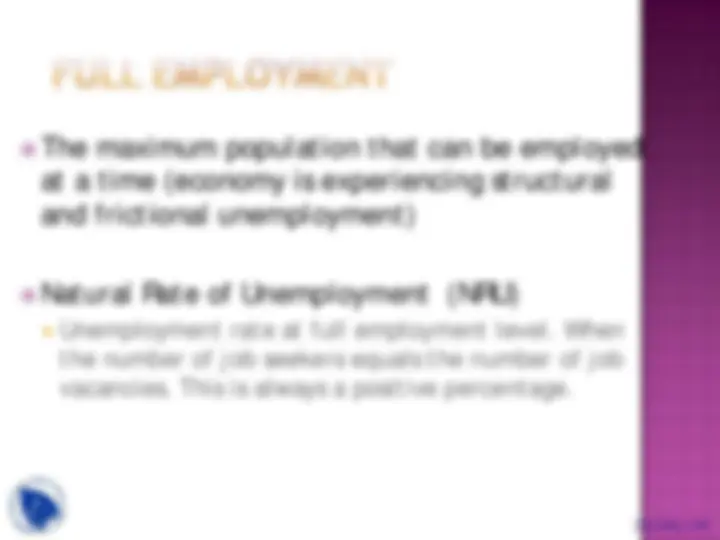
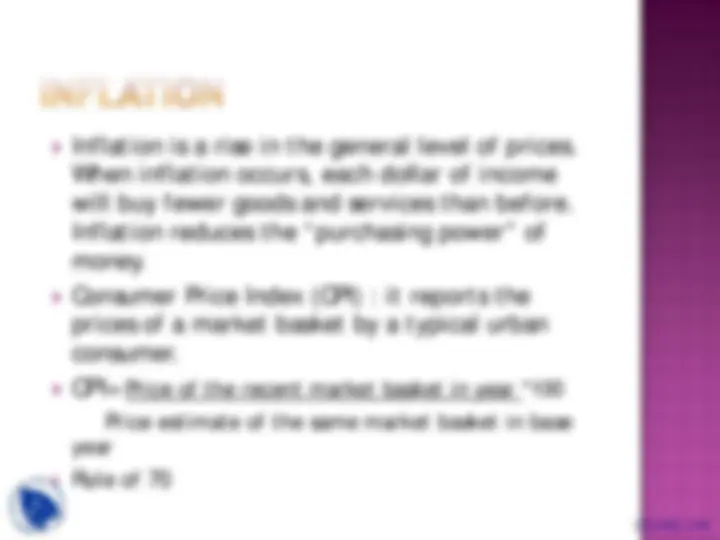
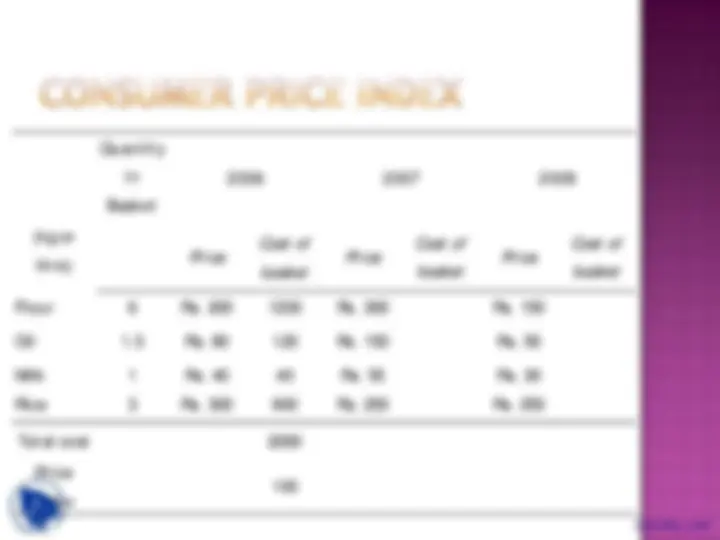
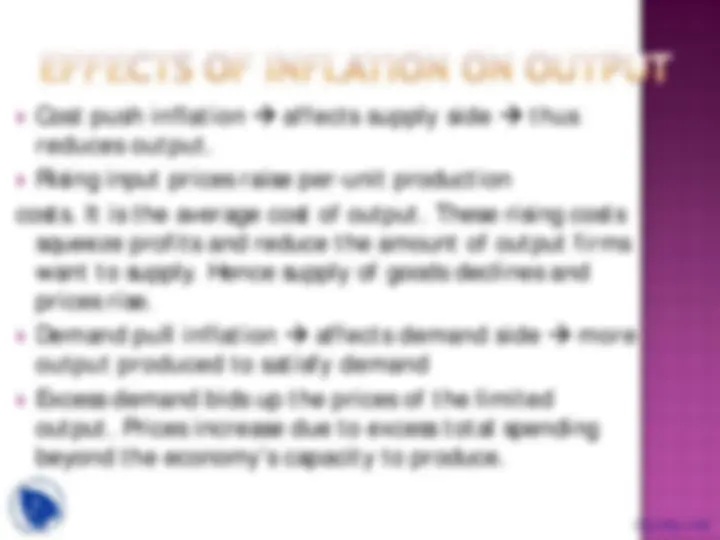
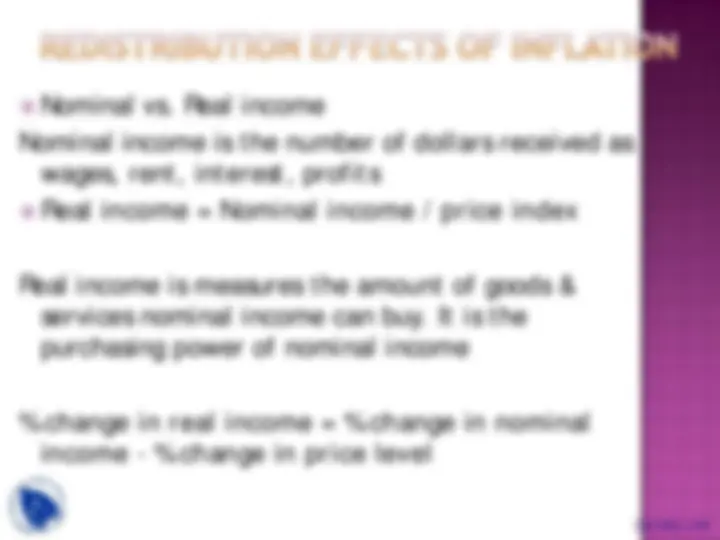
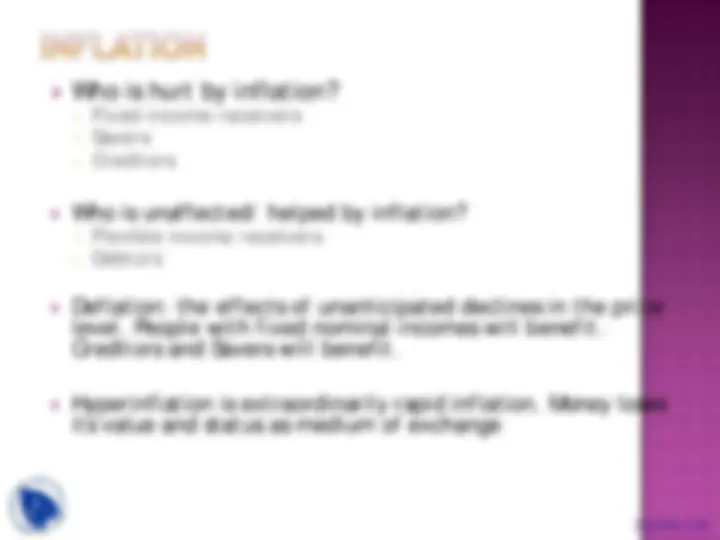


Study with the several resources on Docsity

Earn points by helping other students or get them with a premium plan


Prepare for your exams
Study with the several resources on Docsity

Earn points to download
Earn points by helping other students or get them with a premium plan
Community
Ask the community for help and clear up your study doubts
Discover the best universities in your country according to Docsity users
Free resources
Download our free guides on studying techniques, anxiety management strategies, and thesis advice from Docsity tutors
Prof. Wahid Khan delivered this lecture at Indian Institute of Tourism and Travel Management, Bhubaneswar for Macro Economics course. It includes: Introduction, Macroeconomic, Issues, National, Income, Output, Money, Banking, Monetary, Policy, Growth
Typology: Slides
1 / 22

This page cannot be seen from the preview
Don't miss anything!















Lecture 1& 2
Chapter 26 –
I. McConnell and Brue, Economic Principles, Problems and Policies II. Lipsey, An Introduction to Positive Economics
The study of the behavior of an economy at the aggregate level, as opposed to the level of a specific subgroups or individuals (which is called microeconomics). For example, a macroeconomist might consider the industrial sector, the services sector, but he/she will not consider specific parts of any of these sectors. Factors studies include inflation, unemployment, and industrial production, often with the aim of studying the effect of government policy on these factors.
Peak : temporary maximum in activity. Economy is near or at full employment, and the level of real output is at or very close to the economy’s capacity. Price level is likely to rise
Recession : a period of decline in total output, employment, trade, income.
Trough : bottom lowest in the temporary cycle
Recovery : rise in output and employment towards full employment. A recession is usually followed by a recovery and expansion
Changes in productivity Changes in money supply Changes in spending levels
Expansionary Contractionary
must be actively seeking work to be considered unemployed
Causes a GDP gap The amount by which actual GDP falls short of potential GDP (at full employment levels) Okun’s law: for every 1 percentage point unemployment rises above NRU a GDP gap of 2 percent occurs
Different groups experience different unemployment rates
Occupation Age Race and ethnicity Gender Education Duration
depression, socio-political unrest, lowering morale, poverty, ethnic and racial tension
Quantity in Basket
2006 2007 2008
(kg or litre) Price^
Cost of basket
Price Cost ofbasket Price Cost ofbasket
Flour 6 Rs. 200 1200 Rs. 300 Rs. 150
Oil 1.5 Rs. 80 120 Rs. 150 Rs. 50
Milk 1 Rs. 40 40 Rs. 55 Rs. 30 Rice 3 Rs. 300 900 Rs. 250 Rs. 250
Total cost 2260 Price index
100
Cost push inflation affects supply side thus reduces output.
Rising input prices raise per-unit production
costs. It is the average cost of output. These rising costs squeeze profits and reduce the amount of output firms want to supply. Hence supply of goods declines and prices rise.
Demand pull inflation affects demand side more output produced to satisfy demand
Excess demand bids up the prices of the limited output. Prices increase due to excess total spending beyond the economy’s capacity to produce.